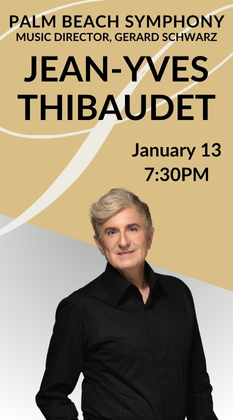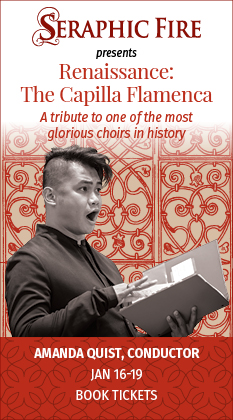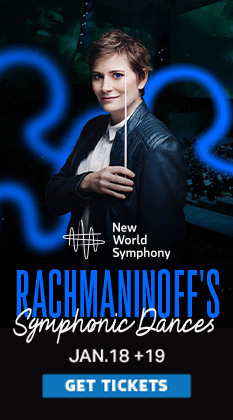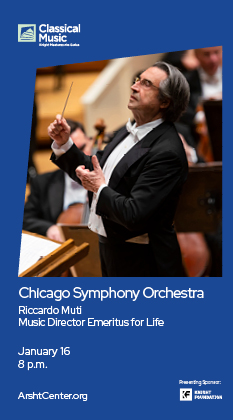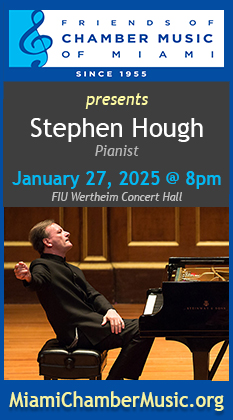Friends of Chamber Music leads off new year with stellar Brahms
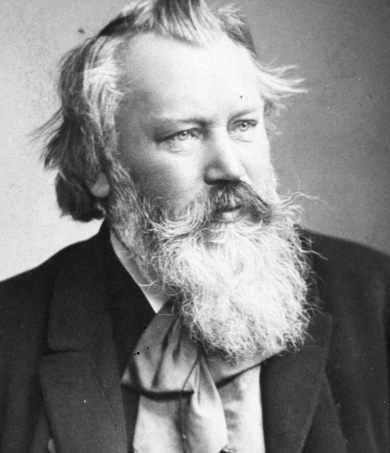
Friends of Chamber Music opened 2014 with an all-Brahms program Sunday afternoon at Gusman Concert Hall.
A stellar trio of musicians came together Sunday to explore music from the very beginning and the very end of the career of Johannes Brahms.
Known for an unshakeable musical integrity that led him to throw countless unworthy works into the fire, Brahms is sometimes taken to have changed very little during his career, having found his style early and simply worked on becoming better at what he did.
Yet this concert, presented by Friends of Chamber Music of Miami, demonstrated what a vast distance he traveled—from the youthful, flashy Piano Sonata No. 2, with its moments of inspiration and stretches of undistinguished Romantic dramatics, to the endless flowing melodies of the inward-looking sonatas for clarinet (which he arranged for viola), composed three years before his death.
Taking the stage at the University of Miami’s Gusman Hall were the violist Roberto Diaz, president of the prestigious Curtis Institute of Music, Ricardo Morales, principal clarinet of the Philadelphia Orchestra, and Joseph Kalichstein, pianist of the renowned Kalichstein-Laredo-Robinson Trio. Kalichstein was the iron man of the group, performing in all three works presented that afternoon, and handling Brahms’ thick, demanding piano writing without showing any signs of flagging concentration or enthusiasm.
The late works of Brahms are often described as autumnal, and with reason, yet there was a melodic freshness to his Sonata No. 1 for Viola and Piano that didn’t sound anything like an old man looking back at life. Diaz and Kalichstein embraced the energy of the first movement, taking a forward-leaning approach that lent an ecstatic, joyful tone to its upward moving phrases. In the second movement, Kalichstein drew out the nobility of the second theme, and Diaz provided a touch of drama, digging into the lowest string to produce the dark throaty tone that’s the unique property of his instrument. Their playing was light and agile in the final movement.
The Piano Sonata No. 2, completed when the composer was 19, has a youthful tone all its one. Given Brahms’ reputation as the great upholder of the classical tradition, it’s strange that one of his first works sounds more like Liszt in its sensuous harmonies and diabolical, virtuoso tone.
Kalichstein played the first movement in a free, improvisational style that suited its fiery tone, with its cadenza-like gestures and rapid runs up and down the keyboard. He brought a sense of coiled tension to theme of the fourth movement, with its nervous, complex accompaniment, one of those moments in this early work in which Brahms sounds like Brahms. Although he may have hit a few more clinkers than is normal for a solo piano performance, he more than made up for it in the fearlessness and gusto of his playing.
The most striking performance of the afternoon came from Morales in the Sonata for Clarinet and Piano in F Minor. Rarely will you ever hear the clarinet played so beautifully. It’s not simply his glowing tone or the buttery smoothness of his phrasing, although these were at the highest level and an essential part of what made this a great performance.
To these qualities, he added a natural musicianship that allowed him bring to the melodies great warmth and a tone of nostalgia and wistfulness, playing in a manner that brought out the emotion of these melodies without letting them become shapless. He achieved nuances of phrasing a tone – holding back a bit here, probing deeply into the dark passages at the instrument’s lower register, playing with a straightforward tone of stentorian power – that showed the vast emotional range of his instrument in the right hands. Kalichstein matched him, playing with a delicacy that helped the wind instrument stand out, despite the orchestral complexity of his part. And when he had the melody and Morales accompanied him with deep tones on the clarinet, they achieved a wonderful tone color that showed how much a few notes could achieve.
As an encore, the three musicians came together to perform a rarity, the sixth piece from Max Bruch’s Eight Pieces for Clarinet, Viola and Piano, giving a darkly polished performance in this unusual combination of instruments.
Posted in Performances
Leave a Comment
Sun Jan 5, 2014
at 11:04 pm
No Comments
